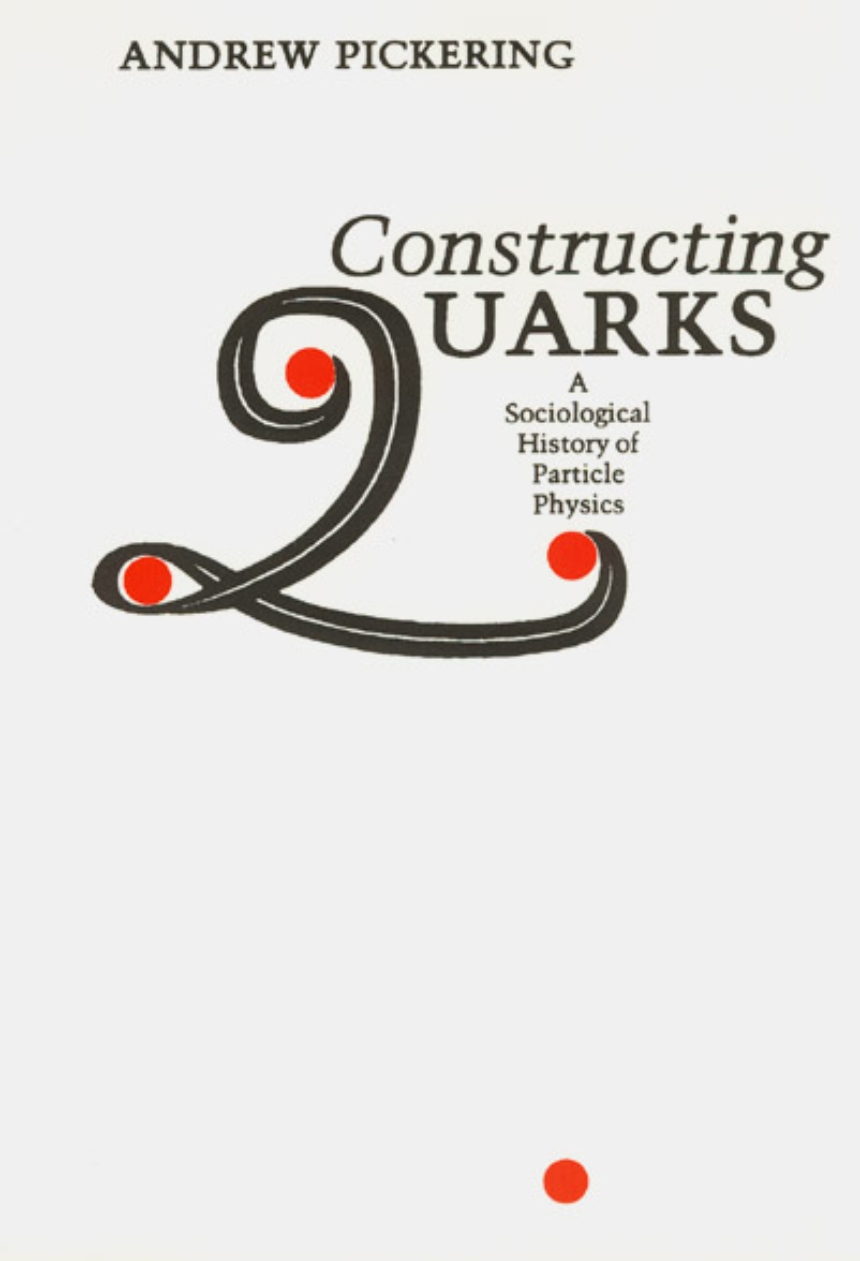Constructing Quarks
A Sociological History of Particle Physics
Widely regarded as a classic in its field, Constructing Quarks recounts the history of the post-war conceptual development of elementary-particle physics. Inviting a reappraisal of the status of scientific knowledge, Andrew Pickering suggests that scientists are not mere passive observers and reporters of nature. Rather they are social beings as well as active constructors of natural phenomena who engage in both experimental and theoretical practice.
"A prodigious piece of scholarship that I can heartily recommend."—Michael Riordan, New Scientist
"An admirable history. . . . Detailed and so accurate."—Hugh N. Pendleton, Physics Today
"A prodigious piece of scholarship that I can heartily recommend."—Michael Riordan, New Scientist
"An admirable history. . . . Detailed and so accurate."—Hugh N. Pendleton, Physics Today
475 pages | 6 x 9 | © 1984
Culture Studies:
Physical Sciences: History and Philosophy of Physical Sciences
Table of Contents
Preface
Part One - Introduction, the Prehistory of HEP and its Material Constraints
1. Introduction
2. Men and Machines
2.1. The HEP Community
2.2. HEP Experiment: Basics
2.3. Accelerator Chronology
3. The Old Physics: HEP, 1945-64
3.1. The Population Explosion
3.2. Conservation Laws and Quantum Numbers: From Spin to the Eightfold Way
3.3. Quantum Field Theory
3.4. The S-Matrix
Part Two - Constructing Quarks and Founding the New Physics: HEP, 1964-74
4. The Quark Model
4.1. The Genesis of Quarks
4.2. The Constituent Quark Model
4.3. Quarks and Current Algebra
4.4. The Reality of Quarks
5. Scaling, Hard Scattering and the Quark-Parton Model
5.1. Scaling at SLAC
5.2. The Parton Model
5.3. Partons, Quarks and Electron Scattering
5.4. Neutrino Physics
5.5. Lepton-Pair Production, Electron-Positron Annihilation and Hadronic Hard Scattering
6. Gauge Theory, Electroweak Unification and the Weak Neutral Current
6.1. Yang-Mills Gauge Theory
6.2. Electroweak Unification and Spontaneous Symmetry Breaking
6.3. The Renormalisation of Gauge Theory
6.4. Electroweak Models and the Discovery of the Weak Neutral Current
6.5. Neutral Currents and Neutron Background
7. Quantum Chromodynamics: A Gauge Theory of the Strong Interactions
7.1. From Scale Invariance to Asymptotic Freedom
7.2. Quantum Chronodynamics
7.3. The Failings of QCD
8. HEP in 1974: The State of Play
8.1. Gauge Theory—Reprise
8.2. The End of an Era
8.3. Three Transitional Biographies
Part Three - Establishing the New Physics: The November Revolution and Beyond
9. Charm: The Lever that Turned the World
9.1. The November Revolution
9.2. The R-crisis
9.3. The New Particles
9.4. Charm
9.5. A New World
10. The Standard Model of Electroweak Interactions
10.1. More New Quarks and Leptons
10.2. The Slaying of Mutants
10.3. The Standard Model Established: Unification, Social and Conceptual
11. QCD in Practice
11.1. Phenomenological QCD—An Overview
11.2. QCD and Spectroscopy
11.3. QCD and Hard Scattering
12. Gauge Theory and Experiment: 1970-90
12.1. Experimental Trends
12.2. Theory Incarnate
12.3. Visions
13. Grand Unification
13.1. GUTs and HEP
13.2. GUTs and Cosmology
13.3. GUTs and Proton Decay
13.4. Gauge Theory Supreme
14. Producing a World
14.1. The Dynamics of Practice
14.2. Traditions and Symbiosis
14.3. Incommensurability
Bibliography
Index
Part One - Introduction, the Prehistory of HEP and its Material Constraints
1. Introduction
2. Men and Machines
2.1. The HEP Community
2.2. HEP Experiment: Basics
2.3. Accelerator Chronology
3. The Old Physics: HEP, 1945-64
3.1. The Population Explosion
3.2. Conservation Laws and Quantum Numbers: From Spin to the Eightfold Way
3.3. Quantum Field Theory
3.4. The S-Matrix
Part Two - Constructing Quarks and Founding the New Physics: HEP, 1964-74
4. The Quark Model
4.1. The Genesis of Quarks
4.2. The Constituent Quark Model
4.3. Quarks and Current Algebra
4.4. The Reality of Quarks
5. Scaling, Hard Scattering and the Quark-Parton Model
5.1. Scaling at SLAC
5.2. The Parton Model
5.3. Partons, Quarks and Electron Scattering
5.4. Neutrino Physics
5.5. Lepton-Pair Production, Electron-Positron Annihilation and Hadronic Hard Scattering
6. Gauge Theory, Electroweak Unification and the Weak Neutral Current
6.1. Yang-Mills Gauge Theory
6.2. Electroweak Unification and Spontaneous Symmetry Breaking
6.3. The Renormalisation of Gauge Theory
6.4. Electroweak Models and the Discovery of the Weak Neutral Current
6.5. Neutral Currents and Neutron Background
7. Quantum Chromodynamics: A Gauge Theory of the Strong Interactions
7.1. From Scale Invariance to Asymptotic Freedom
7.2. Quantum Chronodynamics
7.3. The Failings of QCD
8. HEP in 1974: The State of Play
8.1. Gauge Theory—Reprise
8.2. The End of an Era
8.3. Three Transitional Biographies
Part Three - Establishing the New Physics: The November Revolution and Beyond
9. Charm: The Lever that Turned the World
9.1. The November Revolution
9.2. The R-crisis
9.3. The New Particles
9.4. Charm
9.5. A New World
10. The Standard Model of Electroweak Interactions
10.1. More New Quarks and Leptons
10.2. The Slaying of Mutants
10.3. The Standard Model Established: Unification, Social and Conceptual
11. QCD in Practice
11.1. Phenomenological QCD—An Overview
11.2. QCD and Spectroscopy
11.3. QCD and Hard Scattering
12. Gauge Theory and Experiment: 1970-90
12.1. Experimental Trends
12.2. Theory Incarnate
12.3. Visions
13. Grand Unification
13.1. GUTs and HEP
13.2. GUTs and Cosmology
13.3. GUTs and Proton Decay
13.4. Gauge Theory Supreme
14. Producing a World
14.1. The Dynamics of Practice
14.2. Traditions and Symbiosis
14.3. Incommensurability
Bibliography
Index
